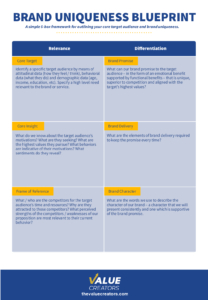Episode #77. How to Think Like a 10-Figure Founder and Build a Brand That Outlasts You — A Conversation with Doug Crowe
Listen to the episode here:
What do billion-dollar founders see that the rest of us don’t?
What separates those who build legacies from those who just build businesses? And how can storytelling—not just strategy—be the most powerful tool for influence and growth?
In this episode of the Value Creators Podcast, Hunter Hastings talks with Doug Crowe, brand strategist and founder of Author your Brand, to unpack the timeless principles that define the world’s most successful entrepreneurs. Doug has worked with hundreds of founders to distill not just what they do—but how they think.
Key insights include:
- Why vision, not charisma, is the real superpower of 9- and 10-figure founders.
- The OODA loop framework and how elite entrepreneurs make faster, smarter decisions.
- How to evolve your leadership as your business grows—or risk becoming the bottleneck.
- The non-negotiable role of personal branding in a world flooded with AI and noise.
- Why your founder story is your strategy—and how to tell it so people remember.
- How culture and cross-training can turn every employee into a brand ambassador.
- What you must stand for—and stand against—to build an enduring legacy.
Doug and Hunter go deep on the intersection of humanity and business, showing that in a digital-first world, the brands that win will be the ones that connect on a human level—with purpose, story, and truth.
Whether you’re a startup founder or scaling a 9-figure enterprise, this episode will challenge how you think about leadership, storytelling, and the future of brand.
This one’s not just about building a business. It’s about becoming the kind of founder who changes industries.
Resources:
➡️ Learn What They Didn’t Teach You In Business School: The Value Creators Online Business Course
Connect with Doug Crowe on LinkedIn
Learn more about Author Your Brand
Connect with Hunter Hastings on LinkedIn
Subscribe to The Value Creators on Substack
Knowledge Capsule
1. Vision Is the Defining Trait of 9- and 10-Figure Founders
- Founders of billion-dollar firms aren’t defined by luck or strategy, but by the clarity of their long-term vision.
- They think decades ahead and see opportunities others can’t.
- Their visions are often galvanizing, like Elon Musk’s “Occupy Mars” — short but world-shifting.
2. Action Trumps Strategy
- Visionary founders prioritize execution over perfect planning.
- They operate using real-time feedback loops (like the OODA loop: Observe–Orient–Decide–Act).
- They make rapid, iterative decisions and adapt constantly based on results.
3. Founders Must Evolve – and Hire Wisely
- The skills and mindset required to grow from startup to a 10-figure firm change dramatically.
- Many founders need to evolve their role – and hire complementary executives to avoid becoming the bottleneck.
- Recognizing when you’re the constraint is part of high-level leadership.
4. Charisma Isn’t Necessary—Conviction Is
- Successful founders aren’t always loud or extroverted; they can lead through quiet conviction.
- Listening, intent, and emotional intelligence often outperform showmanship.
- Empathy and clarity build deeper trust than charisma alone.
5. Excellence Can Be Demanded or Inspired
- Some founders push through intensity and high standards, others through trust and encouragement.
- Both styles can succeed — what matters is clarity of expectations and aligned team culture.
- Empowerment often leads to more sustainable performance.
6. Personal Branding Is Non-Negotiable
- In a world of AI and digital noise, a founder’s personal brand builds trust and human connection.
- It acts as a moat when company messaging alone doesn’t stand out.
- Founders should ask: “What do I stand for beyond business?”
7. Technology Serves—But Can’t Replace—Human Relationships
- AI and automation are powerful for operations but fail to nurture trust.
- Human interaction must be preserved in sales, customer support, and branding.
- The companies that win are those that automate back-end workflows but double down on human touchpoints.
8. Branding Isn’t What You Say — It’s What People Remember
- Branding lives in the minds of customers and even non-customers.
- Every employee, not just marketing, should be cross-trained to carry the company’s mission.
- Brands like Chick-fil-A succeed because their values permeate every layer of the organization.
9. Storytelling Is a Business Superpower
- Facts are forgotten. Stories stick.
- Personal stories, origin moments, and emotional breakthroughs resonate more than data.
- Founders should turn their lived experience into compelling narratives that magnetize customers, employees, and investors.
10. Humanity Is the Differentiator in the AI Age
- AI can’t replicate emotion, intuition, or real experience.
- Maintaining your human edge — heart, soul, empathy — is critical in a world of deepfakes and automation.
- Crowe emphasizes: “Use AI, but don’t let AI use you.”
11. Branding + Cross-Training = Incremental Sales
- When everyone in your org knows and lives the brand mission, you unlock unseen marketing power.
- Employees become brand ambassadors in daily life, often generating untrackable but powerful word-of-mouth.
- Culture becomes the sales engine.
12. Founders Must Ask: What Do I Stand Against?
- True leadership isn’t just about what you believe — it’s also about drawing lines in the sand.
- Clarity on your values, principles, and enemies builds alignment and loyalty.
- Great founders know that the man and the mission are one.
